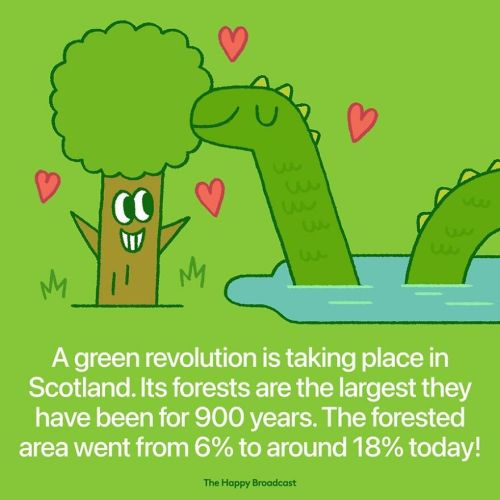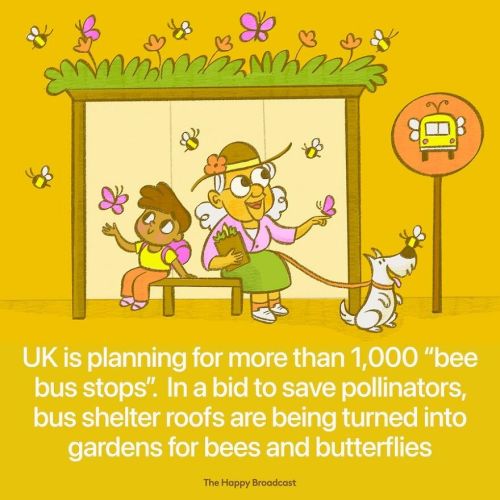The First Ever Report On The State Of The World’s Fungi Has Today Revealed That If The Natural Properties

The first ever report on the state of the world’s fungi has today revealed that if the natural properties of fungus can be harnessed and developed, plastic could be broken down naturally in weeks rather than years.
Kew Gardens and a team of over 100 scientists from 18 countries have compiled the paper, which shows how different organisms can decompose plastics, clean up radioactive material and even speed up the production of biodiesel.
Found last year by a team of Chinese scientists on a rubbish dump in Pakistan, Aspergillus tubingensis breaks down bonds between plastic molecules and then splits them using its mycelia. The process takes a matter of weeks, rather than the decades it usually requires for plastic to naturally disintegrate.
“This ability has the potential to be developed into one of the tools desperately needed to address the growing environmental problem of plastic waste,” says the report.
Speaking yesterday at Kew Gardens, senior scientist Dr Ilia Leitch said: “This is incredibly exciting because it is such a big environmental challenge. If this can be the solution, that would be great.
“We are in the early days of research but I would hope to see the benefits of fungi that can eat plastic in five to ten years.”
A recent Telegraph investigation showed that British plastic sent to Poland to be recycled was actually being burned, spewing dangerous toxic particles into the atmosphere.
It is hoped that fungi could revolutionise the recycling process and provide a sustainable decomposition method for plastics.
The report also seeks to enhance the image of fungi, citing its importance in beer (yeast), penicillin, washing powder and cheese.
The most famous type of fungi - mushrooms - are consumed the world over, with the market for edible species worth £32.5 billion.
In an effort to find out which ‘lost’ species are truly extinct and which species are simply under-recorded due to lack of survey work, Kew runs a ‘lost and found fungi’ citizen science project.
Read More
More Posts from Green-notebooks and Others
15 September 2020: Largest remaining Arctic ice shelf falling apart.




August 2020: Last intact ice shelf within Canadian borders falls apart.





Between July 30 and August 4, the Milne Ice Shelf collapsed into the Arctic Ocean. As Canada’s last fully intact ice shelf, it was estimated to have shrunk the remaining mass by 43 percent, losing more than 30 square miles of land area, which is bigger than the size of Manhattan. […] Located in Canada’s largest and northernmost territory, Nunavut, the shelf is thought to have collapsed mostly because of above-normal temperatures for the region during July 2020, 9 degrees Fahrenheit warmer than the established 30-year average. [Text from NOAA press release. “Canada’s Milne Ice Shelf Collapses.” 12 August 2020.]

Shoutout to the people that work back breaking labor jobs so we can eat. Nothing but respect for them.



earlier this month it was 120 degrees in Australia , but yeah lets continue to mock those trying to save us in the 12 years we have left to slow climate change’s effects.
What is the worst thing that could happen if we listen to scientists and change our ways, and then it turns out they were lying?
Slowly dying in a mad max hell world to own the libs I guess.
california anti-drought measures are always like “take shorter showers! consider brushing your teeth with the sink turned off” and never mention the fact that nestle is bottling all of our fucking water and selling it to people who live in areas with plenty of water
Does anyone know how to become a farmer?
I’m open to anything please help
You know of any examples of wintry Solarpunk?
I’m not sure how all of the logistics would work (I’m more of a sociology guy than a STEM guy), but I don’t see why a colder climate wouldn’t be able to take advantage of renewable energy sources – geothermal and perfected solar technology and such.
Aesthetically, you’d probably end up with something very similar to the “Northern Lights glass igloos” in Finland:




Maybe connect all the igloos with a tunnel/tube system and have them all link up to a big hub at the center. Maybe the hub has advanced solar panels and sits on a geothermal hot spot, and the energy accumulated there could power the surrounding homes and buildings.
People can and should add to this, because my winter solarpunk imagination is a tad limited.



















Tons more at the source!
I am super against light pollution, and have been for decades
but I am also super annoyed by the way it's framed as "without light pollution you can see how beautiful the night sky is" way more prominently than it's framed as "hey, did you ever stop to think of how much energy/resources/money are literally wasted by having so much light shine up into the sky?"
so people get the idea that light pollution can only be remedied by eliminating all night-time light, which would make being outside at night very inconvenient, instead of by making night-time light shine only on the ground where, y'know, the people who need it are
-
 ri0tsn0tdiets liked this · 2 years ago
ri0tsn0tdiets liked this · 2 years ago -
 mindless-lullabies reblogged this · 3 years ago
mindless-lullabies reblogged this · 3 years ago -
 mindless-lullabies liked this · 3 years ago
mindless-lullabies liked this · 3 years ago -
 xmalpracticex reblogged this · 3 years ago
xmalpracticex reblogged this · 3 years ago -
 xmalpracticex liked this · 3 years ago
xmalpracticex liked this · 3 years ago -
 unmecha reblogged this · 3 years ago
unmecha reblogged this · 3 years ago -
 unmecha liked this · 3 years ago
unmecha liked this · 3 years ago -
 bogthing liked this · 3 years ago
bogthing liked this · 3 years ago -
 july-19th-club liked this · 3 years ago
july-19th-club liked this · 3 years ago -
 vengeancemoths reblogged this · 3 years ago
vengeancemoths reblogged this · 3 years ago -
 grunkleosteus reblogged this · 3 years ago
grunkleosteus reblogged this · 3 years ago -
 grunkleosteus liked this · 3 years ago
grunkleosteus liked this · 3 years ago -
 hiiragi-kagamin reblogged this · 3 years ago
hiiragi-kagamin reblogged this · 3 years ago -
 peppermintbandit17 liked this · 3 years ago
peppermintbandit17 liked this · 3 years ago -
 mushroomjar reblogged this · 3 years ago
mushroomjar reblogged this · 3 years ago -
 kumquatea reblogged this · 3 years ago
kumquatea reblogged this · 3 years ago -
 kumquatea liked this · 3 years ago
kumquatea liked this · 3 years ago -
 stunt-muppet liked this · 4 years ago
stunt-muppet liked this · 4 years ago -
 technobladebrainrot liked this · 4 years ago
technobladebrainrot liked this · 4 years ago -
 enrichmentformaverick reblogged this · 4 years ago
enrichmentformaverick reblogged this · 4 years ago -
 livenudebigfoot reblogged this · 4 years ago
livenudebigfoot reblogged this · 4 years ago -
 alchemyarchetype reblogged this · 4 years ago
alchemyarchetype reblogged this · 4 years ago -
 tenderlytouchingchickens liked this · 4 years ago
tenderlytouchingchickens liked this · 4 years ago -
 hooliganpearl reblogged this · 4 years ago
hooliganpearl reblogged this · 4 years ago -
 hooliganpearl liked this · 4 years ago
hooliganpearl liked this · 4 years ago -
 hi-i-may-be-satan liked this · 4 years ago
hi-i-may-be-satan liked this · 4 years ago -
 arcalranem reblogged this · 4 years ago
arcalranem reblogged this · 4 years ago -
 arcalranem liked this · 4 years ago
arcalranem liked this · 4 years ago -
 hthacker12 reblogged this · 4 years ago
hthacker12 reblogged this · 4 years ago -
 hthacker12 liked this · 4 years ago
hthacker12 liked this · 4 years ago -
 ashen-garbage reblogged this · 4 years ago
ashen-garbage reblogged this · 4 years ago -
 ashen-garbage liked this · 4 years ago
ashen-garbage liked this · 4 years ago -
 meme-loving-stuck reblogged this · 4 years ago
meme-loving-stuck reblogged this · 4 years ago -
 rubberduckie-rmd liked this · 4 years ago
rubberduckie-rmd liked this · 4 years ago -
 ms-kawesome liked this · 4 years ago
ms-kawesome liked this · 4 years ago -
 weird-gremlin reblogged this · 4 years ago
weird-gremlin reblogged this · 4 years ago -
 caclancydanger reblogged this · 4 years ago
caclancydanger reblogged this · 4 years ago -
 nobunny liked this · 4 years ago
nobunny liked this · 4 years ago -
 tumblingxelian reblogged this · 4 years ago
tumblingxelian reblogged this · 4 years ago -
 tumblingxelian liked this · 4 years ago
tumblingxelian liked this · 4 years ago -
 cielosphere reblogged this · 4 years ago
cielosphere reblogged this · 4 years ago -
 cielosphere liked this · 4 years ago
cielosphere liked this · 4 years ago -
 sunspotpony reblogged this · 4 years ago
sunspotpony reblogged this · 4 years ago -
 sassy-selenophile reblogged this · 4 years ago
sassy-selenophile reblogged this · 4 years ago -
 mintyowlfish liked this · 4 years ago
mintyowlfish liked this · 4 years ago -
 tntdynama reblogged this · 4 years ago
tntdynama reblogged this · 4 years ago -
 opheliasongs liked this · 4 years ago
opheliasongs liked this · 4 years ago -
 thelostself liked this · 4 years ago
thelostself liked this · 4 years ago